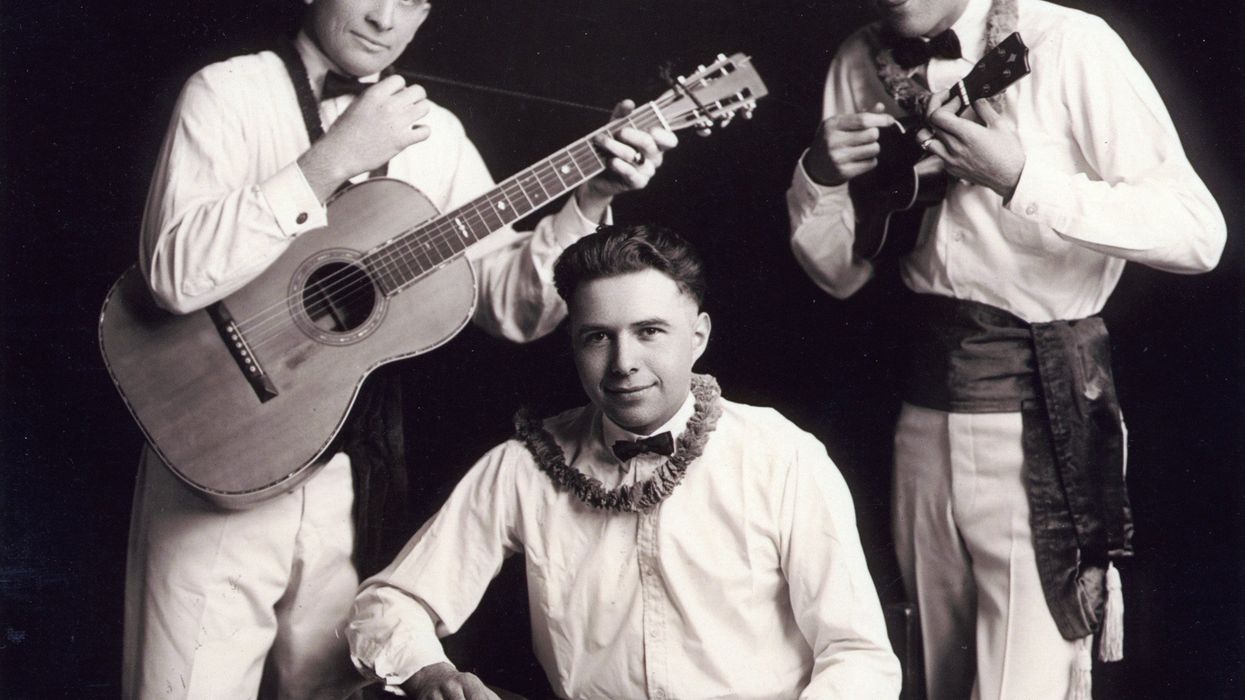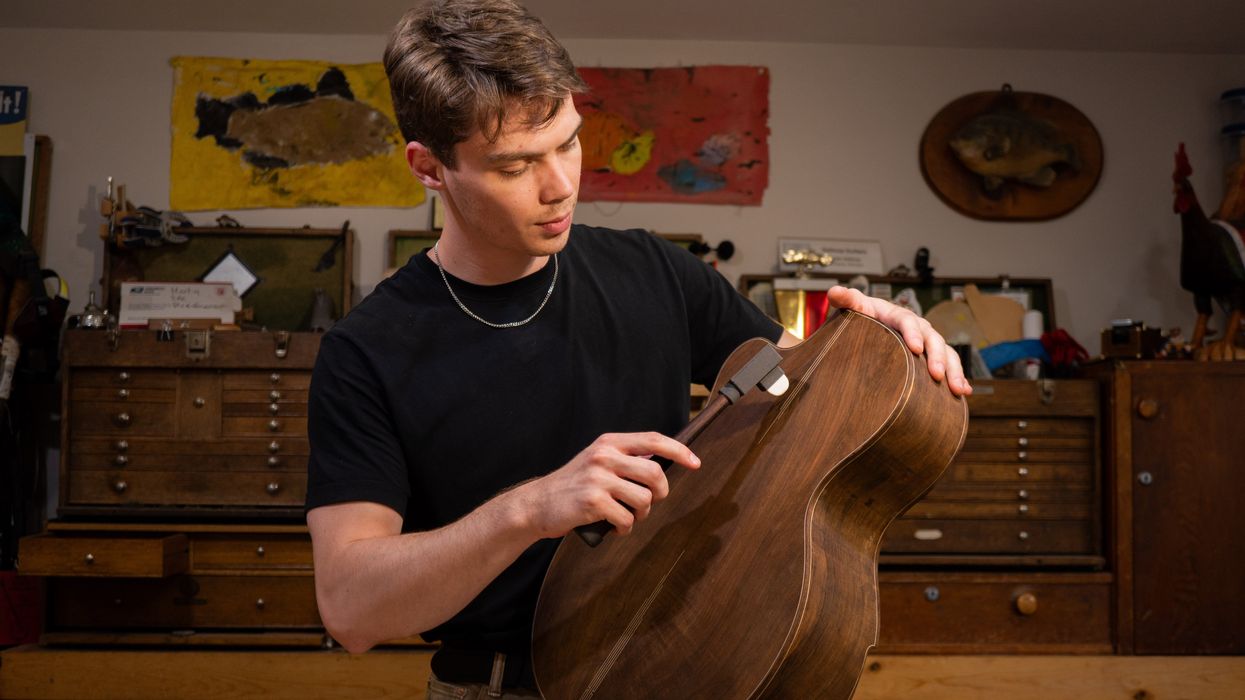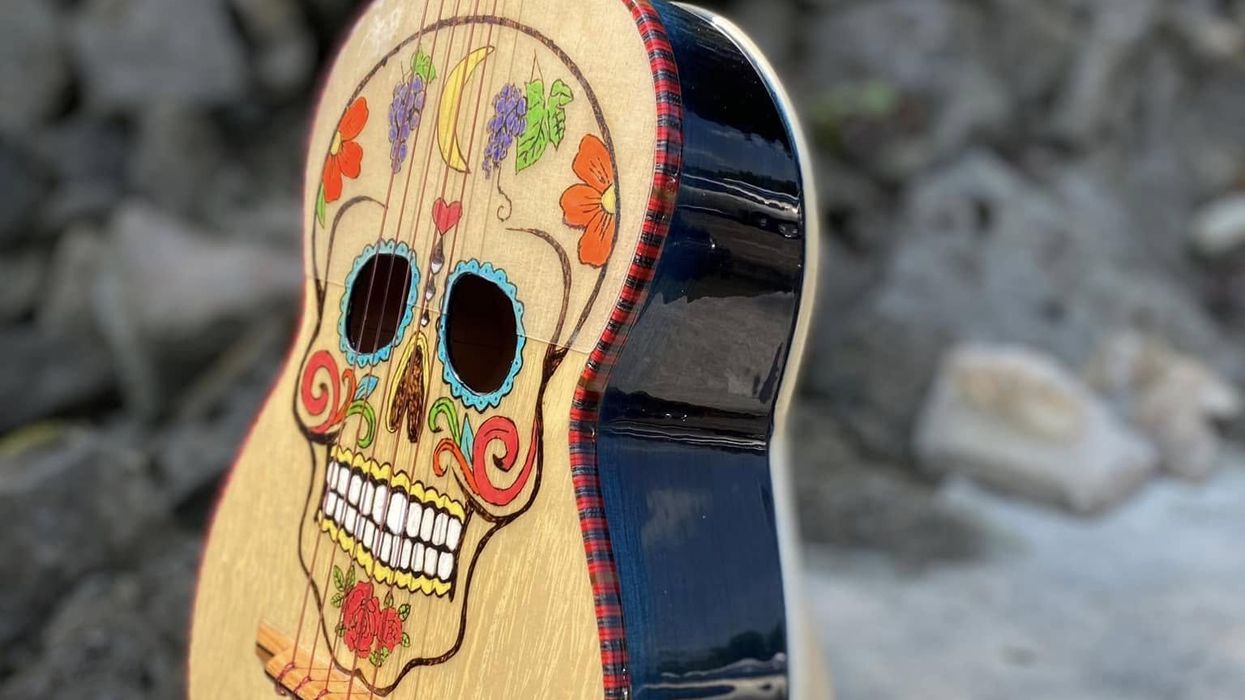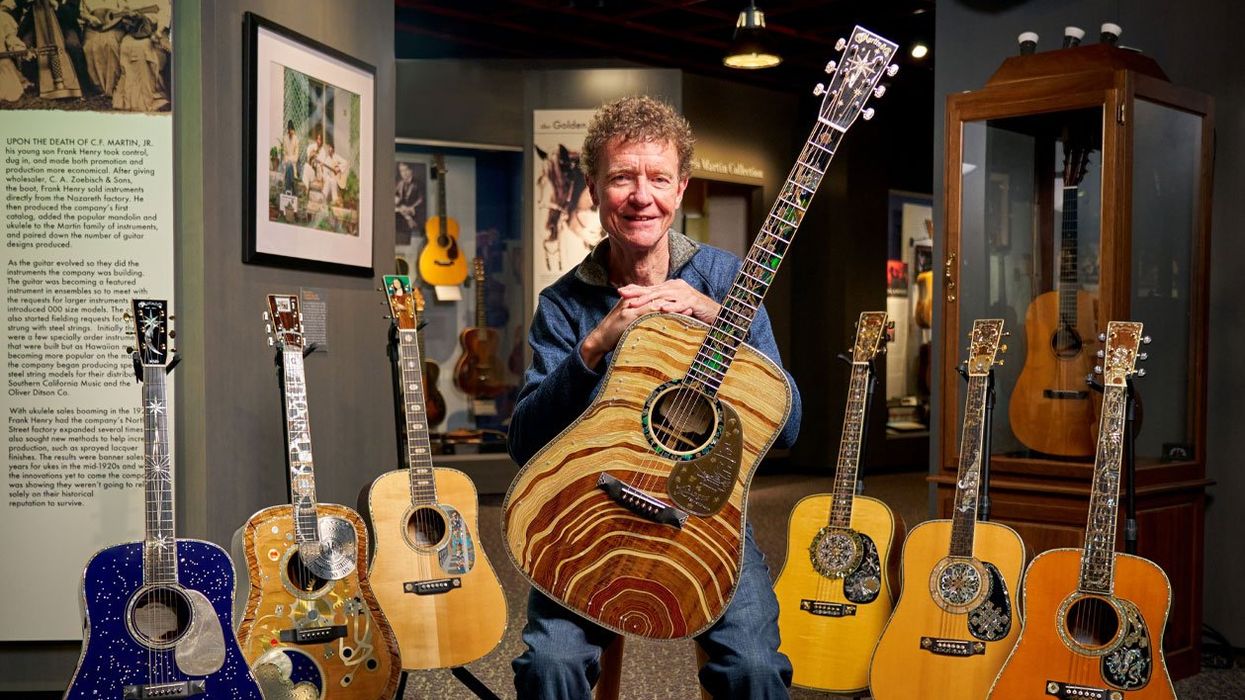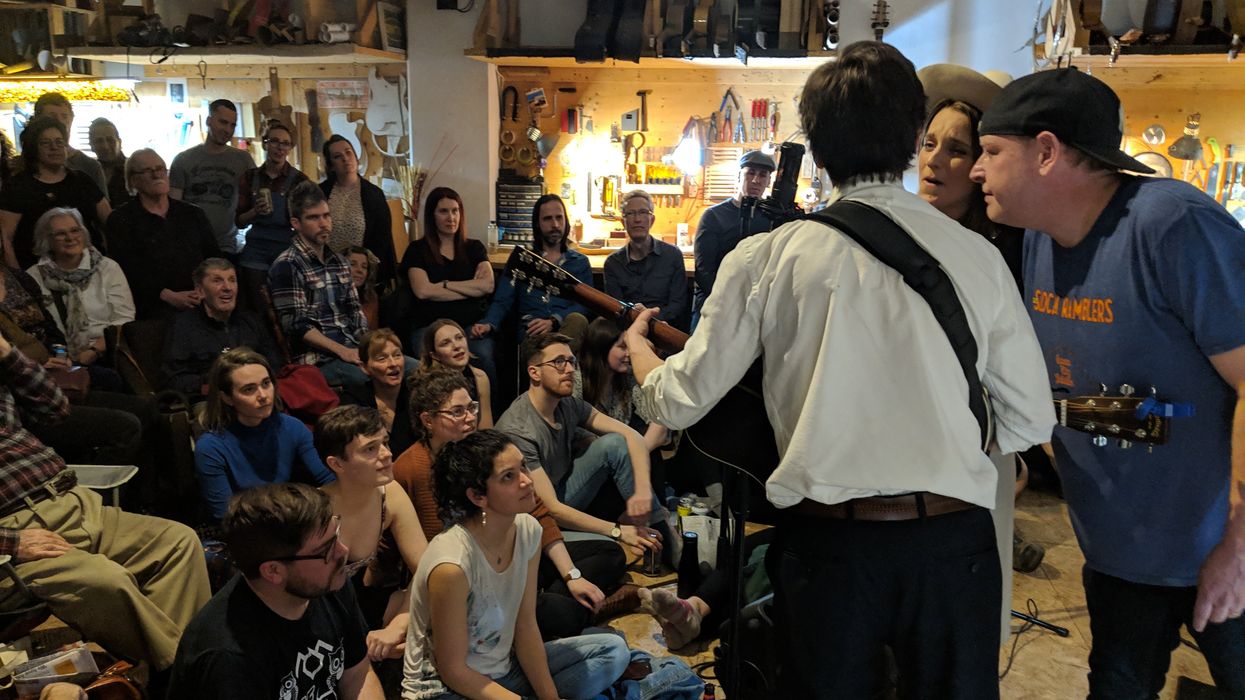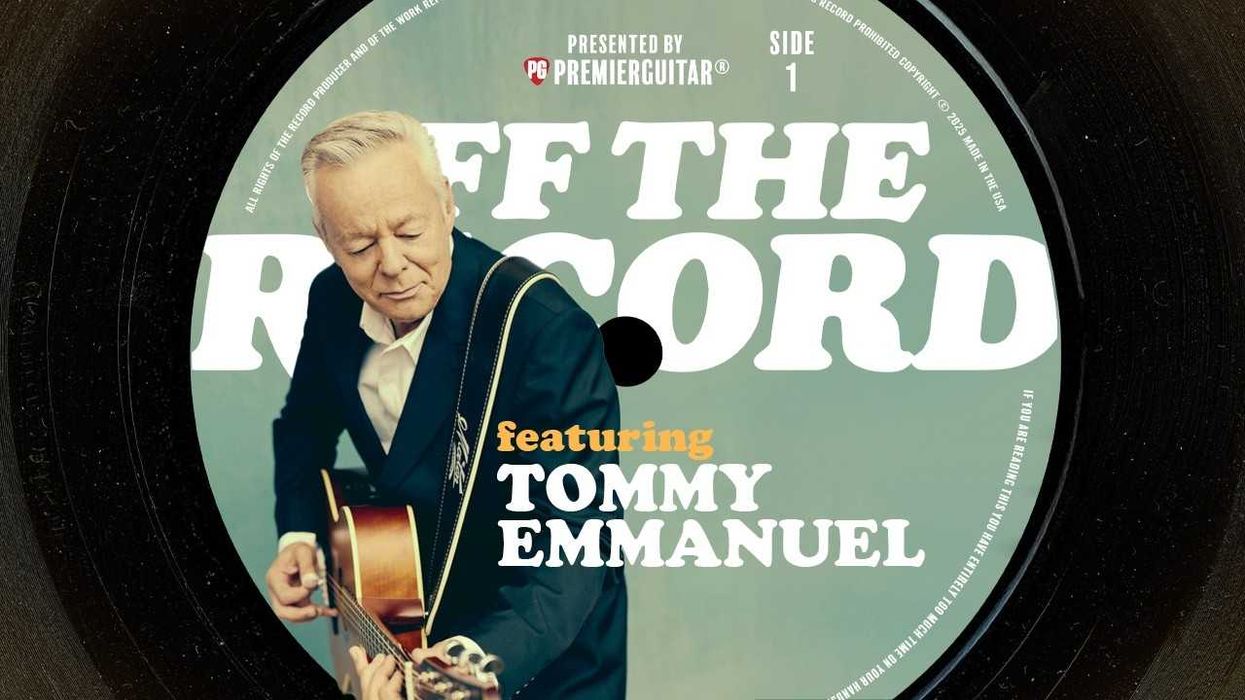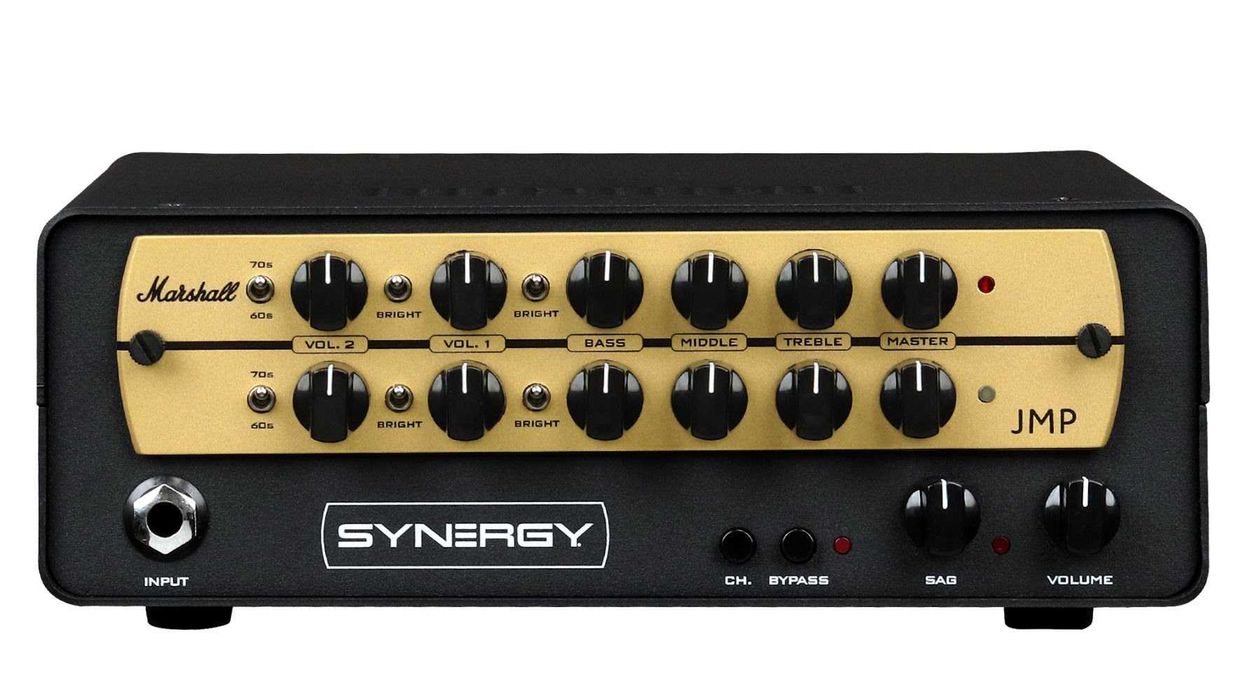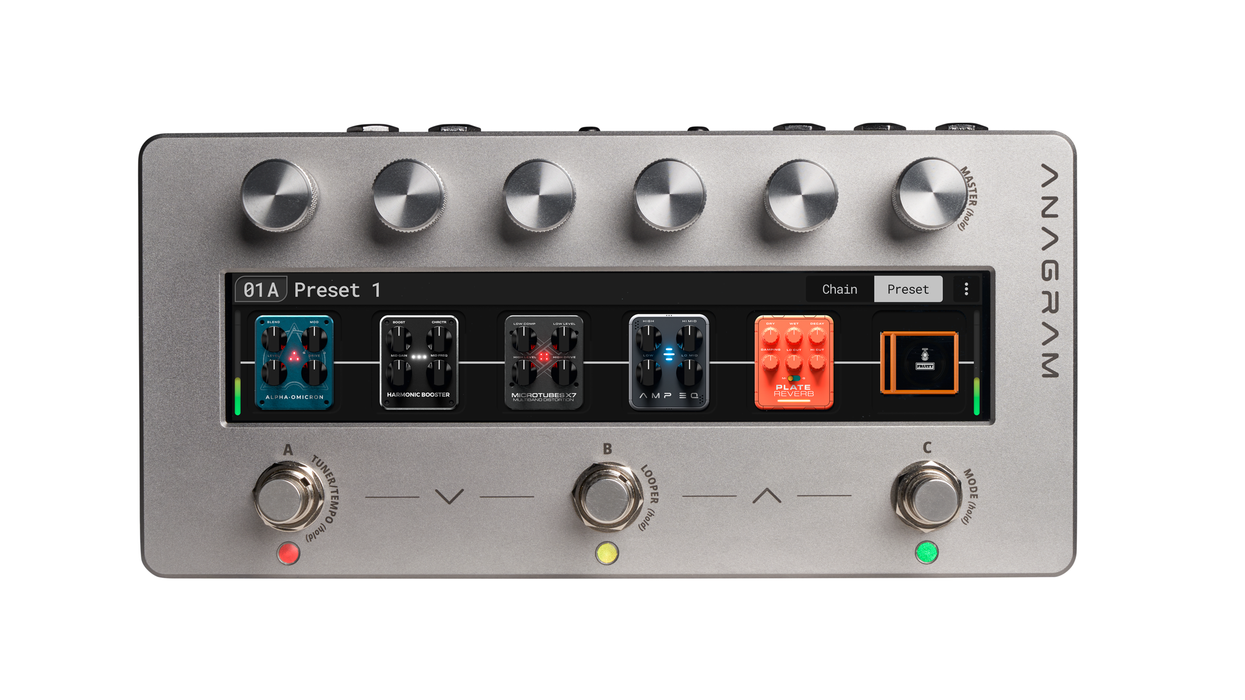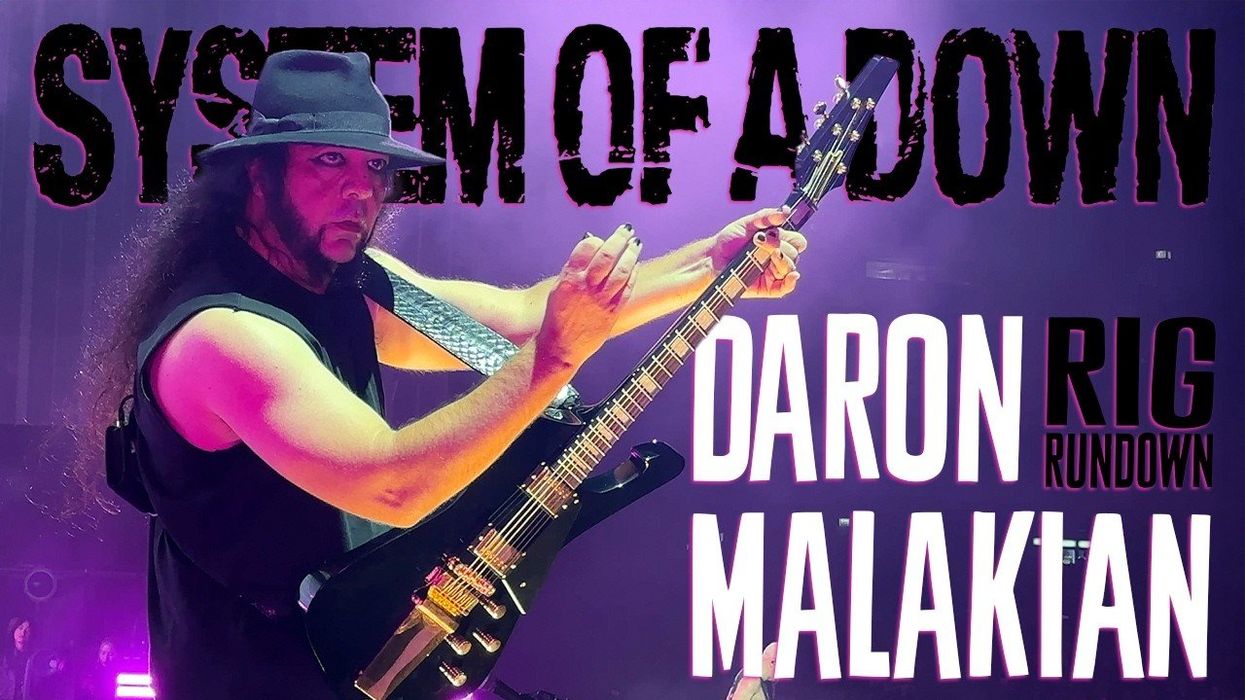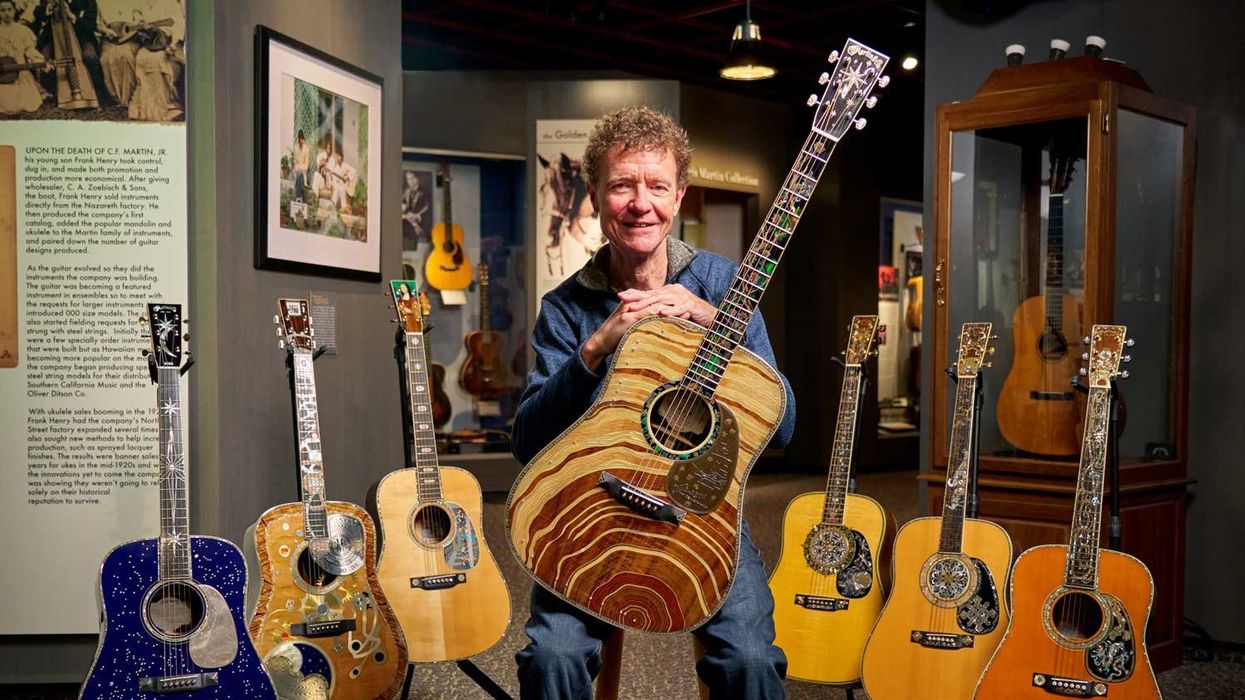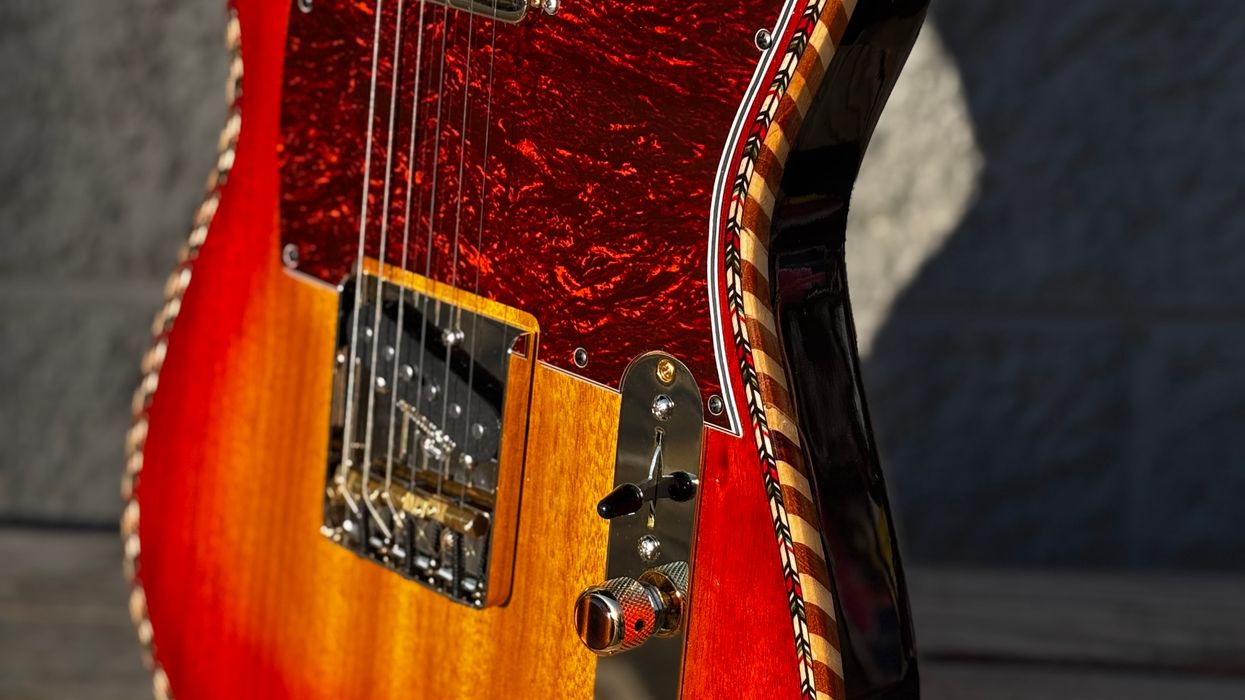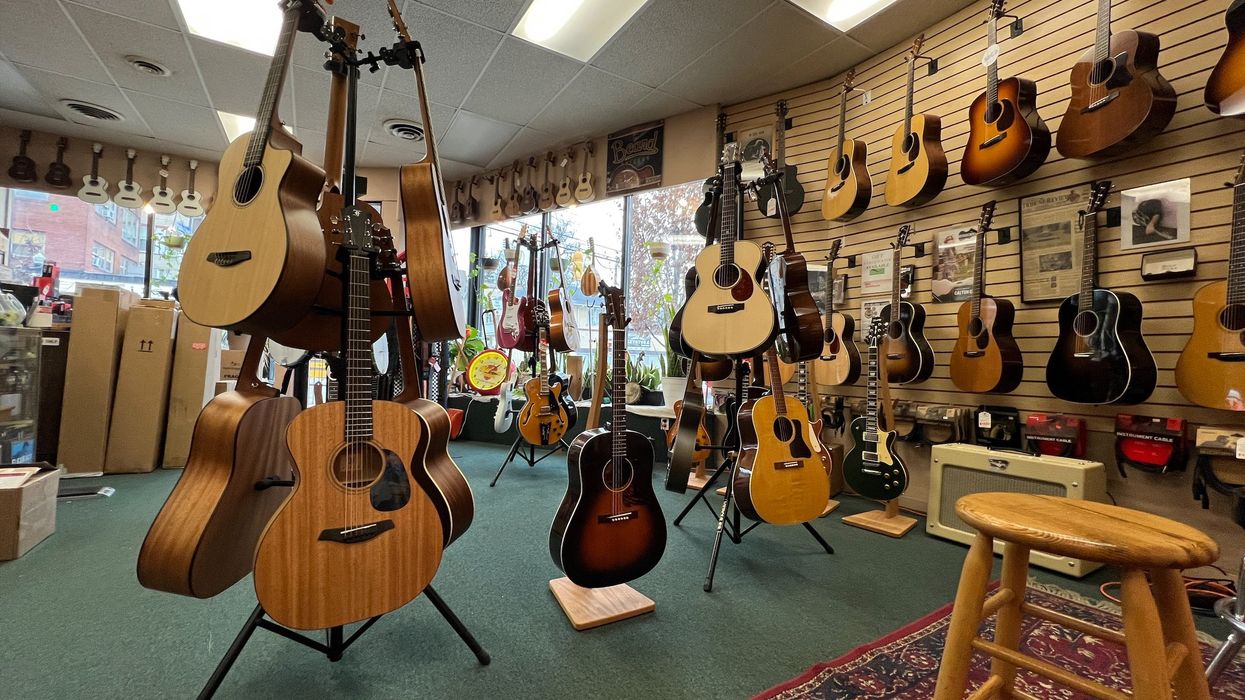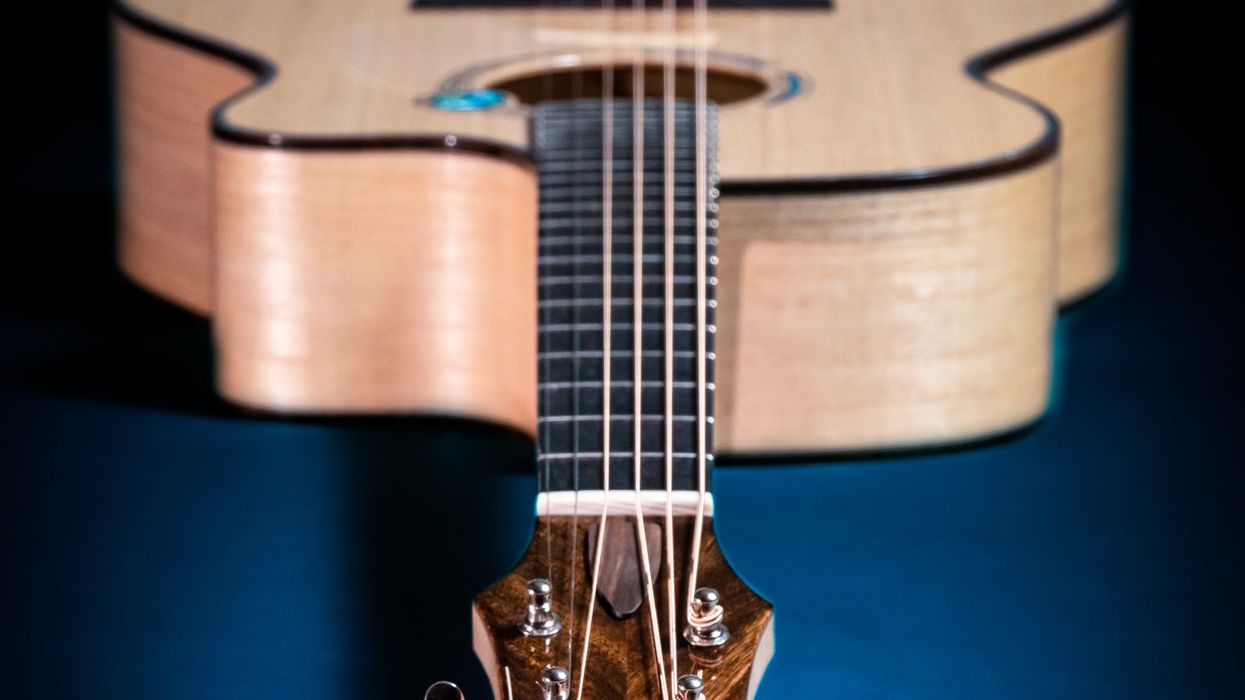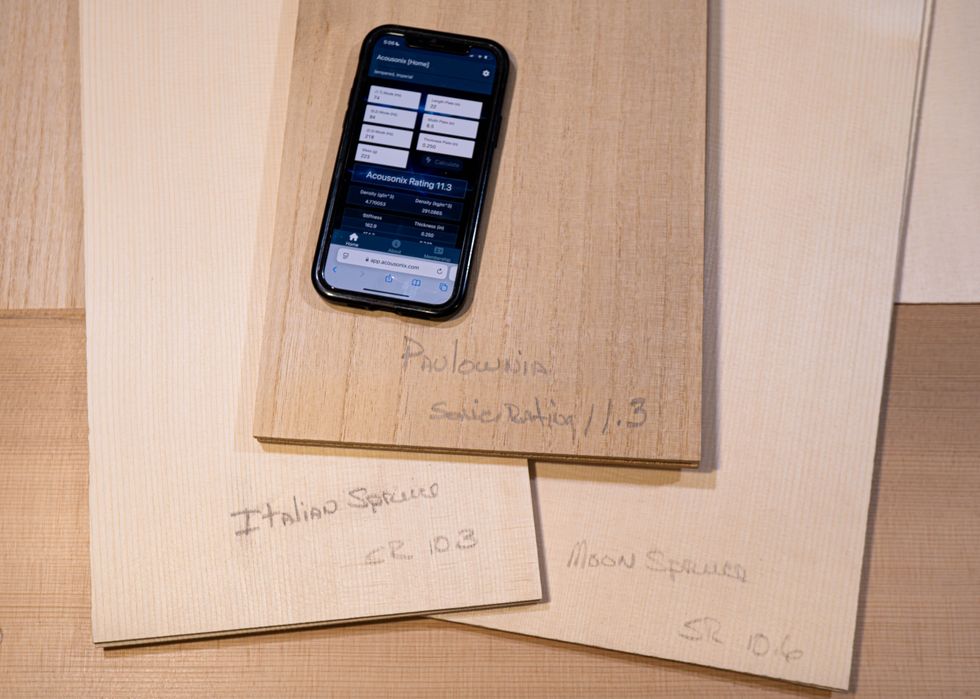In 1906, a devastating earthquake and three days of raging fires leveled 80 percent of San Francisco. Nine years later, to honor the opening of the Panama Canal and signal that San Francisco was back, the city held the Panama-Pacific International Exposition.
More than 18 million people visited. One of the most popular attractions was the Hawaiian Pavilion. Live music and hula dancing, integral parts of Hawaiian culture, were in the show, where they could be experienced on a large scale on the mainland for one of the first times.
That was the beginning of the Hawaiian music craze that had a good run in the U.S. until the Great Depression. Hawaiian musicians had already embraced the ukulele and steel-string guitar, originating the slide-based lap style (versus the typical, so-called Spanish-style playing orientation). Both instruments saw unprecedented demand on Hawaii and the mainland. The story of the ukulele is well-told, but in doing research for this article, I came across a funny comment that caught my eye: “It could be said that in the mid-1920s, Martin was a ukulele company that also made guitars!”
In early 1916, we made a large-body custom guitar for Hawaiian musician Major Kealakai. He ordered it through our largest distributor, Ditson. It was kind of a 0000-size, 12-fret, steel-string guitar with an extra-deep body. The Major and his band were touring the U.S. mainland, and he felt he needed a bigger, louder guitar.
Shortly after that, Ditson commissioned a new larger, pear-shaped steel-string guitar from us to capitalize on the growing interest in Hawaiian music. It was called the dreadnought. It had just 12 frets, a slotted headstock, and a sizable, resonant body. Initially, the dreadnought didn’t sell very well. We did find success, however, making many of our smaller-bodied guitars with steel strings set up for “Hawaiian-style” playing. These were often made with a koa-wood back and sides, and occasionally tops as well. Additionally, if players wanted to use our other guitars lap-style with a slide, Martin manufactured a nut extender to raise the strings far enough above the frets so they wouldn’t interfere.
“It could be said that in the mid-1920s, Martin was a ukulele company that also made guitars!”
While steel strings were available in the late 1800s, the quality was inconsistent. Thanks to the popularity of the banjo and the mandolin, steel-string quality improved. The steel string provided the extra volume many players were looking for.
During the Great Depression, Ditson suffered financial difficulties and was sold. We kept the dreadnought in the line and put the Martin name on it, but sales still remained low. In 1929, we made a one-off, 14-fret steel-string version of our 000-size guitar for a well-known vaudeville banjo player, Perry Bechtel. We squared off the shoulders to accommodate the 14-fret neck. He loved it—and we thought we were onto something.
Gibson also saw opportunity in larger-bodied guitars with steel strings and 14-fret necks. They introduced three new models in 1932: the HG-20, HG-22, and HG-24. The first two were slightly smaller than our dreadnought, and the third was slightly bigger. They realized the value of a 14-fret neck for modern playing styles with steel strings. But instead of squaring off the shoulders, they moved the bridge down and attached the neck to the slope-shouldered bodies.
Not only did those models have a traditional round soundhole, but they also had four f-holes and a sound baffle to try to compete with the newfangled resophonic guitars that were quite loud. But the Gibsons were not well received by consumers, and were eventually discontinued.
In 1934, we redesigned our dreadnought with square shoulders to accommodate a 14-fret neck. That same year, Gibson reintroduced the HG-24 body size with a single round soundhole—no more f-holes or sound baffle—and called it the Jumbo. The Martin Dreadnought and the Gibson J Series guitars are still wildly popular.
I do wonder if they would even exist today if Hawaiian music hadn’t entered the American-pop music sphere in the 1920s?
